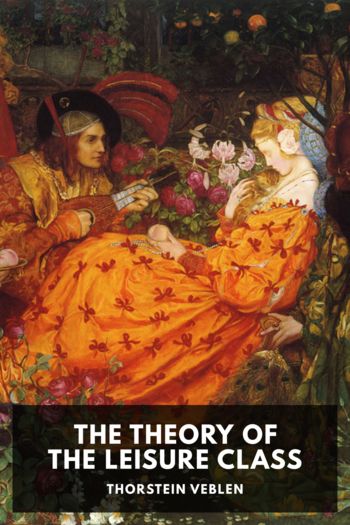Fourteen Lessons in Yogi Philosophy and Oriental Occultism by Yogi Ramacharaka (bts books to read TXT) 📕

3. Prana, or Vital Force.
We have said something of Prana in our little book, "The Science of Breath," which many of you have read. As we said in that book, Prana is universal energy, but in our consideration of it we will confine ourselves to that manifestation of Prana which we call vital force. This vital force is found in all forms of life - from the amoeba to man - from the most elementary form of plant life to the highest form of animal life. Prana is all-pervading. It is found in all things having life, and as the occult philosophy teaches that life is in all things - in every atom - the apparent lifelessness of some things being only a lesser degree of manifestation, we may understand that Prana is everywhere, in everything. Prana is not the Ego, but is merely a form of energy used by the Ego in its material manife
Read free book «Fourteen Lessons in Yogi Philosophy and Oriental Occultism by Yogi Ramacharaka (bts books to read TXT) 📕» - read online or download for free at americanlibrarybooks.com
- Author: Yogi Ramacharaka
- Performer: -
Read book online «Fourteen Lessons in Yogi Philosophy and Oriental Occultism by Yogi Ramacharaka (bts books to read TXT) 📕». Author - Yogi Ramacharaka
The Aura emanating from the Instinctive Mind consists principally of the heavier and duller shades. In sleep, when the mind is quiet, there appears chiefly a certain dull red, which indicates that the Instinctive Mind is merely performing the animal functions of the body. This shade, of course, is always apparent, but during the waking hours is often obscured by the brighter shades of the passing thoughts, emotions, or feelings.
Right here it would be well to state that even when the mind is calm there hover in the Aura the shades indicative of the predominant tendencies of the man, so that his stage of advancement and development as well as his “tastes” and other features of his personality may be easily distinguished. When the mind is swept by a strong passion, feeling, or emotion, the entire Aura seems to be colored by the particular shade or shades representing it. For instance, a violent fit of anger causes the whole Aura to show bright red flashes upon a black background, almost eclipsing the other colors. This state lasts for a longer or shorter time, according to the strength of the passion.
If people could but have a glimpse of the Human Aura when so colored, they would become so horrified at the dreadful sight that they would never again permit themselves to fly into a rage - it resembles the flames and smoke of the “pit” which is referred to in certain orthodox churches, and, in fact, the human mind in such a condition becomes a veritable hell temporarily. A strong wave of love sweeping over the mind will cause the entire Aura to show crimson, the shade depending upon the character of the passion. Likewise, a burst of religious feeling will bestow upon the entire Aura a blue tinge, as explained in the table of colors. In short, a strong emotion, feeling, or passion causes the entire Aura to take on its color while the feeling lasts. You will see from what we have said that there are two aspects to the color feature of the Aura; the first depending upon the predominant thoughts habitually manifesting in the mind of the person; the second depending upon the particular feeling, emotion, or passion (if any) being manifested at the particular time.
The passing color disappears when the feeling dies away, although a feeling, passion, or emotion repeatedly manifested shows itself in time upon the habitual Auric color. The habitual color shown in the Aura, of course, changes gradually from time to time as the character of the person improves or changes. The habitual colors shown indicate the “general character” of the person; the passing colors show what feeling, emotion, or passion (if any) is dominating him at that particular time.
The student who has read the preceding lessons will realize readily that as the man develops and unfolds he becomes less and less the prey of passing passions, emotions, or feelings emanating from the Instinctive Mind, and that Intellect, and then Spiritual Mind, manifest themselves instead of lying dormant in a latent condition. Remembering this, he will readily see how great a difference there must be, between the Aura of an undeveloped man and that of the developed man. The one is a mass of dull, heavy, gross colors, the entire mass being frequently flooded by the color of some passing emotion, feeling, or passion. The other shows the higher colors and is very much clearer, being but little disturbed by feelings, emotion, and passions, all of which have been brought largely under the control of the will.
The man who has Intellect well developed shows an Aura flooded with the beautiful golden yellow betokening intellectuality. This color in such cases is particularly apparent in the upper part of the Aura, surrounding the head and shoulders of the man, the more animal colors sinking to the lower part of the Aura. Read the remarks under the head of “Yellow” in the color table in this lesson. When the man’s Intellect has absorbed the idea of spirituality and devotes itself to the acquirement of spiritual power, development, and unfoldment, this yellow will show around its edges a light blue of a peculiarly clear and luminous shade. This peculiar light blue is indicative of what is generally called “spirituality,” but which is simply “intellectual spirituality,” if you will pardon the use of the somewhat paradoxical term - it is not the same thing as Spiritual Mind, but is merely Intellect impregnated by Spiritual Mind, to use another poor term.
In some cases of a high development of this intellectual state, the luminous light blue shows as a broad fringe or border often being larger than the center itself, and in addition, in special cases, the light blue is filled with brilliant luminous points, sparkling and twinkling like stars on a clear winter night. These bright points indicate that the color of the Aura of the Spiritual Mind is asserting itself, and shows that Spiritual Consciousness has either been made momentarily evident to the man or is about to be made so in the near future. This is a point upon which much confusion has arisen in the minds of students and even teachers of occultism. The next paragraph will also have some bearing upon the matter.
The Aura emanating from the Spiritual Mind, or sixth principle, bears the color of the true primary yellow, which is invisible to ordinary sight and which cannot be reproduced artificially by man. It centers around the head of the spiritually illumined, and at times produces a peculiar glow which can even be seen by undeveloped people. This is particularly true when the spiritually developed person is engaged in earnest discourse or teaching, at which times his countenance seems fairly to glow and to possess a luminosity of a peculiar kind. The nimbus shown in pictures of the great spiritual leaders of the race is the result of a tradition arising from a fact actually experienced by the early followers of such leaders. The “halo” or “glory” shown on pictures arises from the same fact. When we again look upon Hoffman’s wonderful picture, “Gethsemane,” we will experience a new understanding of the mystic glow around the head of the great spiritual Teacher whose deep and true teachings have been obscured from the minds of many of those who claim His name, by reason of the ignorance of the generations of teachers who have lived since His death, but whose teachings are a living truth to occultists of all races. lands, and outward apparent differences of belief.
Of the Aura of the seventh principle, Spirit, we can say but little, and that little has been handed down to us, by tradition. We are told that it consists of a “pure white” light, something unknown to science. No man among us has ever seen this light and none of us ever will (in this stage of development). The sight of this wonderful effulgence is reserved for beings far higher in the scale than are we, but who were once mortals like unto us, and like whom we shall in due time be. “We are Sons of God, and it doth not yet appear what we shall be”; but we are on The Path, and Those who have gone before send back cheering !messages to us. After long ages we are going home.
THE FIFTH LESSON.
THOUGHT DYNAMICS.
Had these lessons been written twenty years ago, instead of today, it would have been a most difficult task to have awakened the understanding of the Western public to the importance of the power of thought, its nature, its effects. Twenty years ago but comparatively few people in the Western world knew anything about the subject in question, and, outside of a few occultists, the words of the teacher would have been regarded as the wildest utterances. But, during the time mentioned, the Western world has been slowly educated to at least a partial understanding of the power of thought, and echoes of the great Oriental teachings on this subject have reached the ears of nearly every thinking person in the Western world, this being particularly true of Great Britain and America.
This awakening is in accordance with natural laws, and is a part of the evolution of the race. It is true that much of the teaching has come from persons who have had but a partial awakening to the truth, and consequently the teachings have been more or less crude and imperfect and more or less colored by the personal theories and speculations of the various teachers who have been writing and speaking upon the subject. The average Western student, who has been interested in the various movements which may be roughly grouped together under the style of “The New Thought,” has been more or less confused by the apparently conflicting theories and teachings which have resulted from the various speculations and theories of the numerous teachers who have sprung up, grown, and in many cases afterward “gone to seed.” But a careful analysis will show that underlying all of the teachings are certain fundamental facts which the awakened mind grasps as truth. All of these teachers have done good work, and, in fact, the teachings of each have reached certain minds which needed the particular thing taught by the particular teacher, and which teaching was the very best possible, considering the particular stage of development of the student. Many students have obtained much good from certain teachers, and have then grown beyond the teacher and his teaching, and have in turn become





Comments (0)